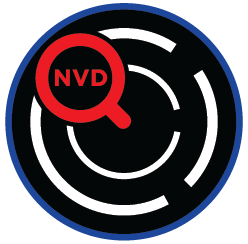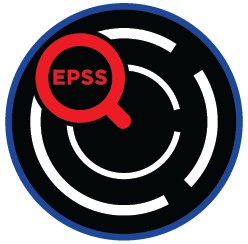

ThreatNG DarCache Vulnerability: Proactive & Holistic Vulnerability Intelligence for a Stronger Security Posture
Beyond Identification: Understanding, Prioritizing, and Proactively Mitigating Real-World Cyber Threats
The ThreatNG Vulnerability Intelligence Repository (DarCache Vulnerability) is a cornerstone of ThreatNG’s external attack surface management, digital risk protection, and security ratings solution, providing a holistic and proactive approach to managing external risks and vulnerabilities. Beyond simply identifying flaws, DarCache Vulnerability moves towards understanding their real-world exploitability, the likelihood of exploitation, and the potential impact. This empowers organizations to make informed security decisions and allocate resources effectively to protect their digital assets. Such capability is crucial for EASM, DRP, and Security Ratings, as it offers a comprehensive understanding of an organization's exposure by integrating essential vulnerability data such as NVD, EPSS, KEV, and verified Proof-of-Concept exploits. This integrated approach distinguishes DarCache Vulnerability by enabling better risk prioritization, efficient remediation, enhanced threat intelligence, and improved communication and collaboration. Security teams, risk managers, and executive leadership must grasp and mitigate their external cyber risks.

Proactive External Vulnerability Intelligence: Sharpening Your Defense Against Exploitation

Improved Risk Prioritization and Resource Allocation
Contextualized Risk Scoring: By combining the severity and technical details from the National Vulnerability Database (NVD), the active exploitation status from Known Exploited Vulnerabilities (KEV), the predicted exploitability from the Exploit Prediction Scoring System (EPSS), and the availability of Proof-of-Concept Exploits (PoC), you can create a more nuanced and risk-driven prioritization framework. This approach ensures that security teams can focus their limited resources on the vulnerabilities that pose the greatest immediate and potential threats to the organization.
Efficient Remediation Efforts: Data from Known Exploited Vulnerabilities (KEV) and the availability of Proof-of-Concept (PoC) exploits provide clear guidance and resources for remediation. This streamlines the patching and mitigation process, making it more efficient.
Enhanced Threat Intelligence and Incident Response
Early Warning System: Monitoring Known Exploited Vulnerabilities (KEV) and the Exploit Prediction Scoring System (EPSS) can serve as an early warning system for potential attacks. This approach helps identify vulnerabilities that are either actively or likely to be exploited in your external attack surface.
Improved Incident Response: During an incident, having a comprehensive, readily accessible Vulnerability Intelligence Repository enables security teams to identify vulnerabilities that may have been exploited quickly. This allows them to assess the potential impact and develop an effective response strategy. Additionally, links to Proof-of-Concept (PoC) exploits are crucial for understanding the techniques used by attackers.

Better Communication and Collaboration
Standardized Language: Using Common Vulnerabilities and Exposures (CVEs) as a standard identifier enhances communication and collaboration among security teams and external partners.
Data-Driven Decision Making: The extensive information in the Vulnerability Intelligence Repository is a strong basis for making data-driven decisions about security investments and risk management strategies.
Unveiling External Cyber Risks: Strategic Prioritization, Proactive Defense, and Informed Decision-Making
Improved Risk Prioritization and Resource Allocation
The repository consistently enables organizations to move beyond simply identifying vulnerabilities to understanding their real-world exploitability, the likelihood of exploitation (EPSS), and the potential impact (NVD and KEV). This allows for precise identification of the most immediate and significant threats, ensuring that limited security resources are focused on the vulnerabilities that pose the most critical risk, whether on the external attack surface, within third-party vendors, or in cloud/SaaS environments.
Enhanced Threat Intelligence and Proactive Mitigation
The repository acts as an early warning system by integrating data on actively exploited vulnerabilities (KEV ) and providing direct links to verified Proof-of-Concept (PoC) exploits (DarCache eXploit ). This empowers security teams to quickly reproduce vulnerabilities, assess their real-world impact, and accelerate the development and deployment of effective mitigation strategies. It bolsters threat intelligence and enables proactive rather than reactive security measures across all aspects of an organization's digital footprint.
Data-Driven Decision Making and Communication
The comprehensive and contextualized information within the repository, using standardized identifiers like CVEs, provides a strong, objective basis for making data-driven decisions about security investments, risk management strategies, and due diligence. This wealth of information also enhances communication and collaboration among security teams, leadership, and external partners, fostering a more informed and unified approach to managing cyber risk.

ThreatNG's Vulnerability Intelligence: Strengthening ThreatNG's Trifecta of Security Solutions
Improved Prioritization of External Risks: By integrating NVD's technical details, KEV's active exploitation status, EPSS's likelihood of exploitation, and verified PoC exploits, organizations can precisely identify which vulnerabilities on their external attack surface pose the most immediate and significant threats. This moves beyond simply identifying flaws to understanding their real-world exploitability, the likelihood of exploitation, and the potential impact.
Enhanced Discovery and Assessment: The repository fuels ThreatNG's external discovery capabilities by providing critical context for vulnerabilities found during unauthenticated discovery. This allows for a more comprehensive assessment of the external attack surface, ensuring that potential entry points for attackers are thoroughly analyzed.
Proactive Mitigation of Exposed Vulnerabilities: Direct links to Proof-of-Concept (PoC) exploits and KEV data enable security teams to quickly reproduce vulnerabilities and assess their real-world impact on their specific environment. This accelerates the development and deployment of effective mitigation strategies for exposed digital assets.
Early Warning for Brand and Data Exposure: Monitoring KEV and EPSS data acts as an early warning system for vulnerabilities that are either actively or likely to be exploited. Understanding the real-world exploitability of discovered vulnerabilities helps identify potential threats that could lead to brand damage or data leaks.
Contextualized Risk Assessment for Digital Assets: The repository provides crucial context for digital risk intelligence findings, such as compromised credentials on the dark web or exposed code secrets. Organizations can better assess their digital risk exposure and prioritize protective measures by understanding the exploitability and impact of associated vulnerabilities.
Informed Decision-Making for Digital Asset Protection: The repository's comprehensive data, including NVD, EPSS, KEV, and PoC exploits, forms a strong basis for data-driven decisions about security investments and risk management strategies related to digital assets.
Accurate and Contextualized Security Scores: The DarCache Vulnerability data directly contributes to the accuracy of ThreatNG's security ratings by factoring in vulnerabilities' real-world exploitability and impact. This ensures that scores like "Cyber Risk Exposure" are derived from a deep understanding of threat likelihood and potential damage.
Dynamic Adjustment of Security Ratings: The continuous updates to the intelligence repositories, including KEV and EPSS, allow ThreatNG's security ratings to adjust dynamically based on newly identified and actively exploited vulnerabilities. This provides a more current and responsive reflection of an organization's security posture.
Actionable Insights for Rating Improvement: The knowledge base embedded within ThreatNG reports, supported by the vulnerability intelligence, provides clear reasoning, risk levels, and recommendations for improving security ratings. This helps organizations prioritize security efforts and allocate resources effectively to address the most critical risks identified through their security ratings.

Empowering Security Beyond Boundaries: How ThreatNG Vulnerability Intelligence Elevates Diverse Security Needs
Brand Protection
Proactive Identification of Brand-Related Exploits: By cross-referencing brand mentions and digital presence with known actively exploited vulnerabilities (KEV) and predicted exploits (EPSS), the repository can proactively identify potential threats that could lead to brand damage.
Contextual Understanding of Brand Damage Susceptibility: The detailed vulnerability information, combined with sentiment and financials findings from DarCache ESG and SEC Form 8-Ks, provides a richer understanding of how specific vulnerabilities could impact an organization's brand reputation through lawsuits or negative news.
Strategic Resource Allocation for Brand Security: By understanding the real-world exploitability and potential impact of vulnerabilities relevant to brand assets, organizations can make smarter security decisions and allocate resources effectively to protect their brand from cyber threats.
Cloud & SaaS Exposure Management
Identification of Exploitable Cloud/SaaS Vulnerabilities: The repository helps evaluate cloud services and SaaS solutions by identifying known vulnerabilities (NVD and KEV) that could affect these platforms. This is crucial for assessing risks associated with sanctioned and unsanctioned cloud services.
Prioritization of Cloud/SaaS Remediation: By combining CVSS scores from NVD with EPSS and KEV data, organizations can prioritize remediation efforts for vulnerabilities in their cloud and SaaS environments that are most likely to be exploited or are already being exploited.
Enhanced Security Posture for Cloud/SaaS Deployments: The comprehensive vulnerability intelligence allows for a more informed assessment of the security posture of cloud and SaaS implementations, such as Salesforce, Slack, or Azure Active Directory. This helps organizations develop effective mitigation strategies for cloud and SaaS exposure.
Due Diligence
Comprehensive Assessment of Target's Vulnerability Landscape: During due diligence, the repository deeply understands a target organization's external attack surface and digital risks by detailing its vulnerability landscape, including known exploits and potential impact.
Identification of High-Risk Vulnerabilities in Acquisitions: The repository leverages NVD, EPSS, KEV, and PoC exploit data to help identify critical vulnerabilities that pose immediate and proven threats within an acquisition target's systems. This is crucial for assessing potential post-acquisition liabilities.
Informed Investment and Partnership Decisions: The detailed vulnerability intelligence enables investors and partners to make more informed decisions by providing a clear picture of the cyber risks associated with a target organization, allowing for better risk assessment and valuation.
Third-Party Risk Management
Assessment of Vendor Vulnerability Posture: ThreatNG's ability to enumerate vendor technologies and integrate with the vulnerability intelligence repository allows for a detailed evaluation of third-party vendors' security posture. This includes understanding the vulnerabilities associated with the technologies they use.
Prioritization of Third-Party Risks: Organizations can prioritize which third-party risks require immediate attention and mitigation efforts by understanding the real-world exploitability and potential impact of vulnerabilities within a vendor's technology stack.
Data-Driven Vendor Risk Decisions: The comprehensive vulnerability data supports data-driven decision-making when evaluating third-party vendors. This enables organizations to make informed choices about vendor partnerships based on their security risk profiles.
Vulnerability Intelligence Repository (DarCache Vulnerability) FAQ
-
The ThreatNG Intelligence Repository (DarCache Vulnerability) is a continuously updated collection of vulnerability intelligence. It provides a holistic and proactive approach to managing external risks and vulnerabilities. Overall, it's important because it moves beyond simply identifying flaws to understanding their real-world exploitability, the likelihood of exploitation, and the potential impact. This enables organizations to make smarter security decisions and allocate resources effectively to protect their digital assets.
-
DarCache Vulnerability is critical to ThreatNG's core capabilities in several ways:
Fuels External Assessment Ratings: It underpins various assessment ratings by providing the necessary vulnerability context. For example, the "Cyber Risk Exposure" score considers parameters covered by the Domain Intelligence module, including vulnerabilities.
Enhances Risk Prioritization: By combining data from NVD, EPSS, KEV, and verified Proof-of-Concept (PoC) exploits, it allows ThreatNG to create a nuanced and risk-driven prioritization framework. This ensures that security teams can focus resources on vulnerabilities posing the greatest immediate and potential threats.
Powers Continuous Monitoring: The repository's continuous updates enable ThreatNG to provide ongoing monitoring of external attack surface, digital risk, and security ratings for all organizations.
Supports Detailed Investigations: Its comprehensive data facilitates detailed investigations of discovery and assessment results through ThreatNG's Advanced Search capabilities.
Informs Reporting and Knowledgebase: The intelligence from DarCache Vulnerability is embedded throughout ThreatNG's reports (Executive, Technical, Prioritized, Security Ratings, etc.) and its knowledgebase. This provides context, reasoning, recommendations, and risk levels to help organizations prioritize security efforts and make informed decisions.
-
DarCache Vulnerability is essential to a wide range of stakeholders within an organization and beyond:
Security Teams and Analysts: They use the detailed vulnerability information, including NVD scores, EPSS data, KEV status, and PoC exploits, to understand, reproduce, and effectively mitigate vulnerabilities.
Risk Managers: They can use the intelligence to understand better the real-world risks posed by vulnerabilities, aiding in contextualized risk scoring and developing robust risk mitigation strategies.
IT Operations and Remediation Teams: The "Required Action" field in KEV and links to PoC exploits provide clear guidance for patching, updating, and applying specific configurations, streamlining remediation efforts.
Executive Leadership: The prioritized reporting and clear understanding of risk, supported by DarCache Vulnerability, enables executives to make data-driven decisions about security investments and overall risk management strategies.
Third-Party Risk Management Teams: They can use the intelligence to assess the vulnerability posture of vendors and their technologies, aiding in due diligence and ongoing third-party risk assessments.
-
DarCache Vulnerability stands out due to its comprehensive integration and contextualization of multiple critical vulnerability data sources, which are seamlessly woven into ThreatNG's broader holistic platform:
Holistic Contextualization vs. Isolated Data: Unlike solutions that might only provide raw NVD data or a simple list of CVEs, DarCache Vulnerability integrates NVD's technical characteristics and impact scores (Attack Complexity, Attack Interaction, Attack Vector, Availability, Confidentiality, Integrity, CVSS Score, Severity, Description, and Link) with other critical intelligence. This provides a richer, more actionable understanding of vulnerability impact and exploitability.
Predictive Exploitability (EPSS) Integration: The inclusion of EPSS data, which offers a probabilistic estimate of exploitation likelihood, is a key differentiator. This allows for a forward-looking approach to prioritization, addressing vulnerabilities that are not just severe but also likely to be weaponized, which many standalone solutions lack.
Real-World Exploitation (KEV) Focus: DarCache Vulnerability directly incorporates Known Exploited Vulnerabilities (KEV). This is crucial for prioritizing remediation efforts on vulnerabilities that pose an immediate and proven threat, particularly those observed in ransomware campaigns. This focus on active threats is often missing or less prominent in basic vulnerability databases.
Actionable Proof-of-Concept (PoC) Exploits: Direct links to verified Proof-of-Concept (PoC) exploits on platforms like GitHub (DarCache eXploit) significantly accelerate the understanding of how a vulnerability can be exploited. This practical insight into real-world attack techniques is invaluable for security teams to reproduce and mitigate issues, offering a level of actionable detail beyond typical vulnerability descriptions.
Seamless Integration within a Unified Platform: The key difference is that DarCache Vulnerability is not a standalone tool but an intrinsic, continuously updated intelligence repository within the ThreatNG "all-in-one" solution. It feeds directly into ThreatNG's external attack surface management, digital risk protection, and security ratings capabilities. This means the vulnerability intelligence is inherently connected to:
External Discovery: Informing purely external, unauthenticated discovery.
External Assessment: Directly contributing to various assessment ratings such as Web Application Hijack Susceptibility, Subdomain Takeover Susceptibility, BEC & Phishing Susceptibility, Brand Damage Susceptibility, Data Leak Susceptibility, Cyber Risk Exposure, Code Secret Exposure, Cloud and SaaS Exposure, ESG Exposure, Supply Chain & Third Party Exposure, Breach & Ransomware Susceptibility, and Mobile App Exposure.
Risk Contextualization: Its data is enriched by and enriches other intelligence repositories like Dark Web (DarCache Dark Web), Compromised Credentials (DarCache Rupture), Ransomware Groups and Activities (DarCache Ransomware), and ESG Violations (DarCache ESG).
Comprehensive Investigation Modules: The vulnerability data is a crucial component within various investigation modules such as Domain Intelligence (DNS Intelligence, Subdomain Intelligence, IP Intelligence, Certificate Intelligence), Sensitive Code Exposure, Search Engine Exploitation, Cloud and SaaS Exposure, Online Sharing Exposure, Sentiment and Financials, Archived Web Pages, Dark Web Presence, and Technology Stack.
This integrated and contextualized approach allows ThreatNG to provide a truly holistic view of an organization's external digital presence and associated risks, going far beyond what a standalone vulnerability intelligence feed could offer.
DarCache Dark Web: Data and information gathered from the dark web, a part of the internet not indexed by search engines and can only be accessed using specialized software.
DarCache ESG: Data and information gathered to support the analysis and evaluation of companies and other organizations' Environmental, Social, and Governance performance.
DarCache Ransomware: Data gathered to support the analysis and tracking of ransomware attacks and the threat actors behind them.
DarCache Rupture: A database of usernames, emails, and organizations that have been compromised in data breaches or other security incidents.
DarCache Mobile: Intelligence repository of mobile apps identifying exposed sensitive information such as authentication tokens, API keys, and private keys, helping organizations strengthen their security posture and reduce digital risk.
DarCache Bug Bounty: In-depth insight into worldwide bug bounty initiatives enables organizations to proactively use crowdsourced security research data to discover and address vulnerabilities.
DarCache 8-K: Leverage a unique collection of cybersecurity incident disclosures from publicly traded companies to proactively identify and mitigate threats, enhance your security posture, and gain a competitive edge across your external attack surface, digital risk protection, and security ratings initiatives.
DarCache Bank Identification Numbers (BIN): A database of essential information related to Bank Identification Numbers (BINs) used in financial transactions worldwide.

























